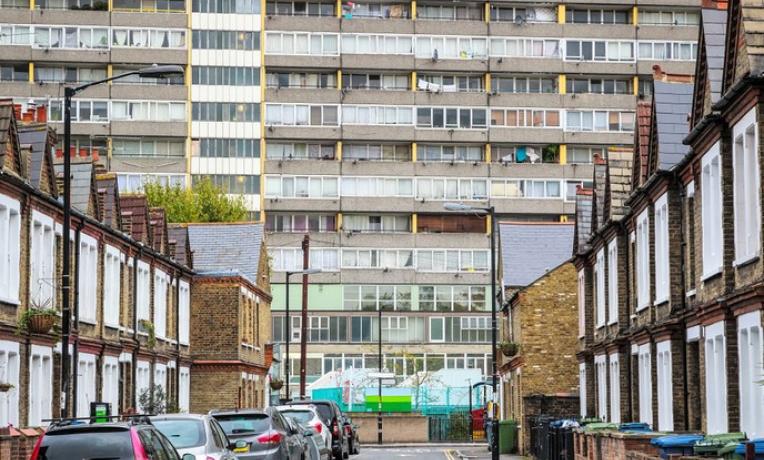Myth or reality? Lifting the veil on the neighbourhood effect
There is a common belief that concentrating poor people in the same area and isolating them from wealthier neighbourhoods actually aggravates their situation. To investigate this assumption, the DEPRIVEDHOODS project used new approaches.

Many factors influence our path in life and eventually make us who we are. These include our parents, our friends, the school we go to, the career path we choose, and even the area we live in. The latter is actually an economic and social science concept of its own, commonly known as the ‘neighbourhood effect’.
This effect notably implies that living in an area with a high concentration of poverty has a negative effect on the school outcomes of children and their future income as adults. In other words, deprived areas beget deprived people. This thinking has largely influenced policy-making, reinforcing this belief. But is this assumption really reliable?
“There is surprisingly little evidence that living in poorer neighbourhoods really affects individual lives. Research tends to focus on how neighbourhoods with high poverty concentration impact individual outcomes such as income. But what about the other way around? One’s income also determines where one lives. The problem here lies in identifying the actual direction of causal effects,” says ERC grantee Maarten van Ham, Professor of Urban Geography at TU Delft.
The DEPRIVEDHOODS (Socio-spatial inequality, deprived neighbourhoods, and neighbourhood effects) project was meant to overcome this problem. To do that, van Ham and his team investigated the long-term neighbourhood histories of a large number of people, from birth to adulthood. They studied neighbourhood effects for siblings and finally devised a method that models who moves to which areas/urban districts before proceeding to model actual neighbourhood effects.
“Project results show that the neighbourhood effect on income is biased upwards by the influence of the childhood family context. Ultimately, we concluded that adult neighbourhood experiences depict a neighbourhood effect on income, but that the childhood neighbourhood effect is essentially a childhood family context effect. We found that there is a long-lasting impact of the family context on income later in life, and that this effect is strong regardless of the individual neighbourhood pathway later in life,” van Ham explains.
In a nutshell, while neighbourhood effects are usually small, they are significant for children and continue to impact them later in life. This phenomenon is even stronger for ethnic minorities, according to van Ham.
The project offers two additional insights into the issue. The first is that socio-economic segregation is increasing in European cities and that higher levels of segregation also come with higher levels of inequality.
Finally, the team found that this phenomenon should actually be seen as multi-dimensional and multi-scale. “Segregation by income or ethnicity occurs not just in residential neighbourhoods, but also in schools, workplaces and leisure sites. Segregation in each of these domains is interconnected,” says van Ham. “Segregation is also multi-scale as it occurs in a continuum of spatial scales, from micro to large urban regions. To understand the impact of segregation on individuals, it is therefore crucial to take a multi-scale perspective.”
The ERC-funded project has received a lot of attention from the media and policy-makers. It has raised awareness about increasing levels of socio-economic segregation and its effects on individuals. Most importantly, it is an essential lesson for policy-makers: “There is now more awareness that creating mixed neighbourhoods is not a quick fix for social problems. It helps improve such areas, but not so much in advancing individual lives. In the long run however, mixed neighbourhoods can also benefit people in deprived areas,” van Ham concludes.
Biography
Prof.dr. M. van Ham is a professor of Urban Geography at the Department of Urbanisms, Faculty of Architecture and the Built Environment, Delft University of Technology & Professor of Geography, University of St Andrews.
Maarten studied economic geography at Utrecht University, where he obtained his PhD with honours in 2002. He worked at the University of Amsterdam and Utrecht University and was affiliated with the Max Planck Institute in Berlin. In 2006 he was appointed Director of the Centre for Housing Research (CHR) at the University of St Andrews for six years. In 2011 he was appointed full Professor of Geography at the University of St Andrews in the UK and full Professor of Urban Geography at Delft University of Technology in the Netherlands.
Maarten has published over 100 academic papers and 10 edited books. He is a highly cited academic with research projects in the UK, The Netherlands, Germany, Sweden, Finland, Lithuania, Estonia, Spain, and China. Maarten has expertise in the fields of urban poverty and inequality, segregation, residential mobility and migration; neighbourhood effects; urban and neighbourhood change; housing market behaviour and housing choice; geography of labour markets; spatial mismatch of workers and employment opportunities.
In 2014 Maarten was awarded an European Research Council grant to investigate Socio-spatial inequality, deprived neighbourhoods, and neighbourhood effects (DEPRIVEDHOODS). One of the first major outcomes of this project is the book Socio-Economic Segregation in European Capital Cities. East meets West. This study shows that with rising inequality, European cities are becoming more socio-economically segregated: poor and rich are increasingly living separated. See www.segregationeurope.eu. The book has received a lot of attention in the European media.






